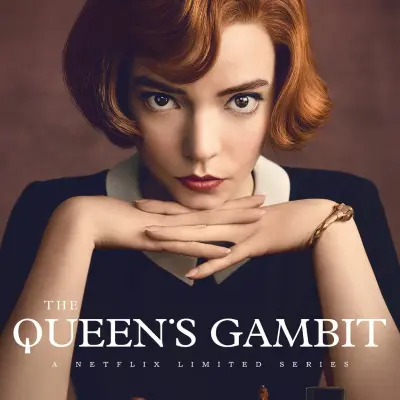The Queen's Gambit could've made a huge difference in the lives of many girls had it premiered 50 years ago
-

"I’ll tell you who I am," says Mary McNamara. "I’m the girl who lost to Beth in the first round at the local tournament and then gave her a Kotex pad in the ladies room. Yup, I’m Kotex girl. Yup, I’m Kotex girl. Actually, the character has a name, Annette Packer (Eloise Webb), and she shows up again a few episodes later to deliver a short but pivotal speech about how important it was to have been beaten by Beth because it proved that girls could do great things. It’s the 1960s — as evidenced by Beth’s Cleopatra eyeliner and kicky hat — the same decade when real-life child prodigy turned troubled but brilliant grandmaster Bobby Fischer was giving the United States one more weapon in its Cold War arsenal by beating Russians on his way to the world championship. In 2020, the message about the value of seeing a woman win in a man’s world may seem a bit obvious (and given the whiteness of virtually everyone involved, limited) — but to its everlasting credit, The Queen’s Gambit is not about that. Aside from a few sexist comments from a few minor characters, the series examines a personal journey toward greatness in which the lead character happens to be female. Still, it’s tough not to wonder how many lives would have been different if there had been a Beth Harmon, actual or fictional, at the time of Fischer’s rise. Including mine."
ALSO:
- The joy of The Queen's Gambit is its wish-fulfillment fantasies: Anya Taylor-Joy's Beth 'escapes every gendered societal double standard with as much ease and grace as when she wriggles out of traps on the chess board, an awkward social outcast that is abruptly, suddenly, a stunning fashion icon," says Aaron Bady. "But her history of abandonment becomes, just as abruptly, the discovery of community. They pass every love test. If chess is usually considered an antisocial game, her genius draws everyone closer to her, healing every hurt and betrayal. And if her origin story is traumatic abandonment, her superpower makes everyone love her, support her, and stick with her. This is fun to watch, like when a superhero thrashes all of the bad guys. Things looked bad for a minute there, but, luckily, everything is fine now thanks to how, well, super the superhero is."
- The Queen's Gambit is the grand master of the limited series: The space between TV and movies is put to full use on the Netflix series
- How The Queen's Gambit shot its complex ceiling chess games
TOPICS: The Queen's Gambit, Netflix
More The Queen's Gambit on Primetimer:
